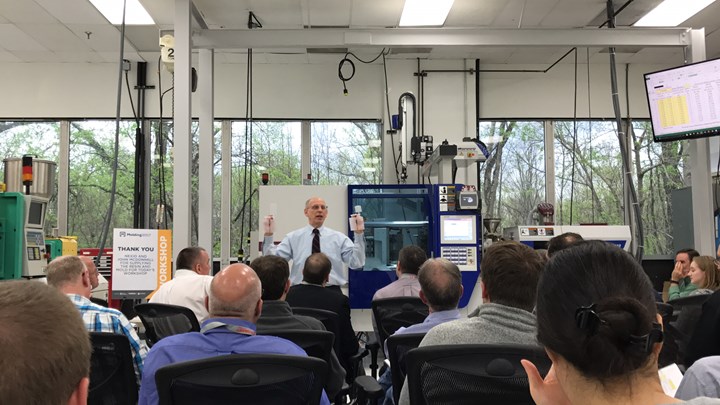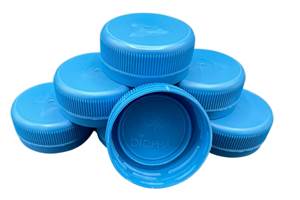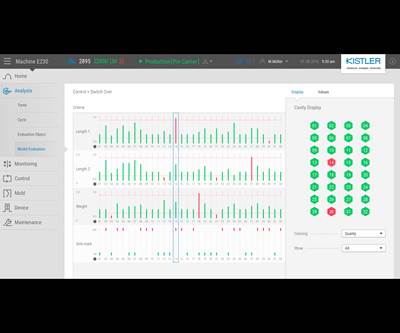The Experience Curve and Well-Trained Process Technicians
Pairing external big picture training with internal job-specific instruction can help your process technicians meet quality expectations as well as production targets.
Over the years in the injection molding industry, I’ve had the opportunity to work with hundreds of different molders. Regardless of where I was, the need for better internal training programs and strong technical resources are always topics of discussion. Training is key to developing those technical resources, but the term training is misused more often than it should be. I am going to use this article to share my thoughts on technical resource development and how training fits into it.
To start, most of the time when people are complaining about a lack of training, they are really referring to experience or the lack thereof. There are many different options for training a process technician these days, but the least we can hope for is that whatever training is applied, it decreases the experience curve.
The experience curve is a bell curve with “years in the industry” along the horizontal axis and “unique issues never experienced before per year” on the vertical axis. That vertical axis, by the way, never hits zero again, regardless of how long you’re in injection molding. While the right training, with a major focus on troubleshooting techniques, can greatly reduce a process technician’s reaction time and his or her ability to solve these issues on their own, there is nothing that can completely take the place of experience.
Finding a Root Cause Vs. Keeping a Process Running
Process technicians are often faced with a selection of inherent challenges, from old or malfunctioning equipment; worn-out or even damaged molds; and material issues, including running regrind with no generation tracking as well as process windows that are so narrow that normal variation causes part defects. Now we’d all like to be able to say, “This doesn’t happen at my plant; we address the root cause on the floor or our process development is robust, and we determine any potential issues before jobs are turned over to the production floor.”
Experience gives process technicians the “What” and their training helps them identify the “Why.”
We all know that in the real world that isn’t always the case. Whether there isn’t financial justification to address the issue, or customer demands force us to keep running, most of us have to figure out a way. This is the type of scenario that creates the unique issues I mentioned above. It’s the unique issues that training doesn’t often prepare new process technicians to resolve on their own. We can’t always stop a job and address a root cause or afford to spend hundreds of thousands of dollars replacing an old machine. We do have to deal with expectations that the job stays running and our process technicians are charged with ensuring that happens.
Over the years as we run these jobs, we find workarounds for them, and we know that, for example, when issue “A” arises on job “B” in machine “C,” I need to make an adjustment to the “D” setting. Some molders do an excellent job of documenting that A,B,C and D, but most don’t do it well enough. Instead, it becomes tribal knowledge because workarounds typically don’t get documented. I mean, they’re called workarounds for a reason. Training generally doesn’t focus on what would be classified as workarounds. Most third-party training provides knowledge on how to establish a process and how to identify root causes, which is what it is supposed to do.
If you have mold damage that is causing flash on a part, you want your process technician to identify that and have it addressed. We don’t want to start the “Chase” and spend the entirety of the run time making adjustments between shorts and flash. What happens when it’s a 2-cavity mold and the issue shows rears its head at 2 a.m. with no toolroom to address it and the order is shipping out at in 6 hours?
Training can definitely help a process technician understand what process changes could potentially help reduce the part from flashing, but with experience that technician will know what is needed to get those parts within acceptable tolerance to ship to the customer. Experience gives them the “What” and their training helps them identify the “Why.” Both are equally important to getting the job running and then to addressing the root cause to prevent it from reoccurring. This example is very common, and most molders have spare components and the ability to swap them out quickly, but I’m hoping the point is still apparent.
True Believer
When I was first introduced to scientific injection molding, more years ago than I’d like to admit, I was all in and defiantly wanted to shut every job down that had something preventing it from running as robustly as possible. Many of us have had that reaction, regardless of what training program we had.
I recently sent a team member to the AIM Institute and talking with him upon his return brought back some memories for me. We all leave training with a new perspective because we begin to understand the reasons why our jobs aren’t running well and learn ways to make them better. But once we enter leadership roles and become responsible for budgets and on-time deliveries, we understand that we are sometimes forced to run under less-than-ideal circumstances. That’s why it is important to have practical internal training that is specific as possible to the products you make and to the equipment you make those products on.
Ideally, we’re pairing external training programs with one developed internally to ensure that our process technicians know how to address common issues in our plant, but can also understand what is needed to address the root cause at a juncture when both time and money are available to do so.
What happens when it’s a 2-cavity mold and the issue shows rears its head at 2 a.m. — with no toolroom to address it — and the order is shipping out in 6 hours?
A systematic approach to troubleshooting and identifying root causes is also a very important tool to provide a process technician. Practical, theoretical and critical thinking are the areas that training should be focused on when developing your process technicians, but we must keep in mind that none of these will ever take the place of experience.
There are actions we can take to help make things a bit easier for all our process technicians. When we develop workarounds for issues, documenting them is critical. This doesn’t mean that we are giving up on having the issues addressed, it just means we are acknowledging them and providing direction on actions that we can take to alleviate them. I recently put together what I’ve called the “Know Issues Guide” for our process technician group. It’s a list of any issues we have for each job, specific to the machine it runs in and the exact action taken. These aren’t issues that arise every single run that require the same process change. If that was the case, then we would just evaluate the process itself and, if needed, permanently adjust it. In many cases, it isn’t even a process adjustment that takes place, it could be specific to an area of the mold, for example.
Say it starts burning after a few shots, and there is a specific area — and method — for cleaning it. This is the kind of issue that they would learn over time with experience, but my goal with this guide is to speed that process up by giving them a virtual mentor for them. This isn’t a troubleshooting guide that gives them seven ways to fix shorts either. It is a specific, known issue we’ve had in the past and the exact way it was addressed. It is an extension of the practical side of their training.
I want to point out again that there is a difference between training and experience, and both are critical for a well-rounded, effective process technician. Although we can help the inexperienced catch up quicker, the only way to get more experience is with time. Even those of us with decades of experience in the industry still come across something new all the time.
ABOUT THE AUTHOR: Robert Gattshall has 30 years of experience in the injection molding industry and holds multiple certifications in Scientific Injection Molding and the tools of Lean Six Sigma. Gattshall has developed several “Best in Class” Poka Yoke systems with third-party production and process monitoring such as Intouch Monitoring Ltd. and RJG Inc. He has held multiple management and engineering positions throughout the industry in automotive, medical, electrical and packaging production. Gattshall is also a member of the Plastics Industry Association’s Public Policy Committee. In January 2018, he joined IPL Plastics as process engineering manager. Contact: 262-909-5648; rgattshall@gmail.com.

John Bozzelli leads an external training session at the Polymers Center in Charlotte during Molding 2017. Photo Credit: Plastics Technology
Related Content
PHA Compound Molded into “World’s First” Biodegradable Bottle Closures
Beyond Plastic and partners have created a certified biodegradable PHA compound that can be injection molded into 38-mm closures in a sub 6-second cycle from a multicavity hot runner tool.
Read MoreDiagnosing Defects: Determine True Root Cause Before Adjusting a Process
Common defects can have common causes — flash equals worn mold shutoffs, right? Except when they don’t. Trust your eyes, but verify the root cause before adjusting a process.
Read MoreMoving Beyond the Relative Viscosity Curve — Determining Optimum Plastic Flow Rates: Part 1
Should injection molders consider using a range of plastic flow rates, versus the selection of one plastic flow rate from the relative viscosity curve?
Read MoreHow To Design Three-Plate Molds – Part 4
There are many things to consider, and paying attention to the details can help avoid machine downtime and higher maintenance costs — and keep the customer happy.
Read MoreRead Next
How Can Molders Achieve Effective Process Monitoring?
You have developed a proper process; now you need to monitor that process to ensure its stability through a run.
Read MoreDon’t Get Caught in the Flash-and-Shorts Chase
Injection molding’s most common defects can have inverse correlation, where correcting one causes the other, leading to the “chase.”
Read MoreIs It Time For Injection Molding Machines to be Standardized?
If you looked at four machines from four different suppliers, you’ll find four different sets of icons and terminologies, all in different layouts.
Read More





















